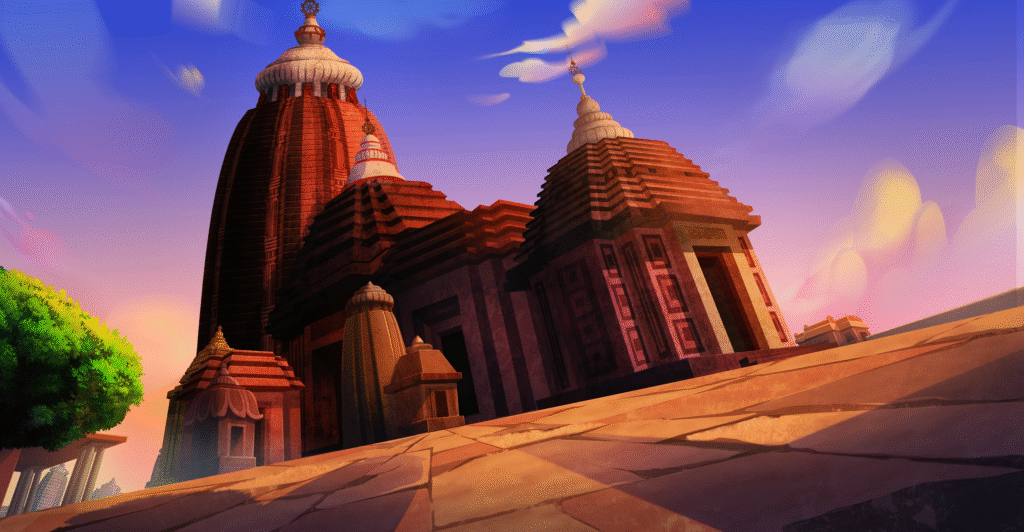
Struggles of Jagannath Temple: From Kalapahad to British Raj
Struggles of Jagannath Temple. The Jagannath Temple in Puri, Odisha, is one of the most revered pilgrimage sites in India and a powerful symbol of cultural identity. Dedicated to Lord Jagannath, an incarnation of Lord Vishnu, the temple attracts millions of devotees every year, especially during the famous Rath Yatra. But beyond its spiritual grandeur lies a history of resilience. From the violent attacks of Kalapahad in the 16th century to the exploitative policies of the British Raj, the temple has faced repeated struggles. Yet, through faith and devotion, the sanctity of Jagannath has always endured.
The Glory of the Jagannath Temple
Built in the 12th century by King Anantavarman Chodaganga Deva of the Eastern Ganga dynasty, the Jagannath Temple is an architectural and cultural marvel. Its towering shikhara dominates Puri’s skyline, and its rituals have continued unbroken for centuries. The temple is not just a religious site but also a cultural hub, representing Odisha’s traditions, festivals, and artistic heritage.
However, this spiritual stronghold became a target for invaders and rulers who sought to control its immense wealth and influence. The temple’s history reflects a constant struggle between devotion and political power.
Kalapahad’s Invasion: A Dark Beginning
The first major blow came in 1568, when Odisha faced the invasion of Kalapahad, a general under the Sultan of Bengal. Known for his hostility towards Hindu institutions, Kalapahad launched a destructive campaign against temples. The Jagannath Temple was one of his primary targets.
Historical accounts describe how Kalapahad desecrated the sanctum, damaged idols, and looted treasures. This incident marked one of the darkest chapters in the temple’s history.
But the faith of devotees never faltered. Anticipating the attack, the temple priests secretly removed the sacred idols and hid them in remote forests and villages. This tradition of safeguarding the deities during invasions became a repeated act of devotion and resilience in later centuries.

Survival Through Multiple Invasions
Kalapahad’s attack was not the last. The temple continued to face challenges under different rulers:
-
Mughal Era: While Emperor Akbar was known for tolerance, subsequent Mughal governors often interfered in the temple’s management. Pilgrims were burdened with heavy taxes, and rituals were sometimes disrupted.
-
Maratha Rule: In the 18th century, the Marathas took control of Odisha and became protectors of the Jagannath Temple. They restored some stability, but the temple still faced occasional threats of raids and exploitation.
Each time danger arose, the temple priests and devotees ensured that rituals continued, even if the deities had to be hidden for years. The resilience of the community kept Jagannath’s presence alive.
The British Raj and Colonial Interference
The arrival of the British in Odisha in 1803 brought a new type of struggle. Unlike earlier invaders who attacked temples physically, the British sought administrative and financial control.
Challenges During the British Period:
-
Revenue and Wealth: The Jagannath Temple owned vast land grants and received donations from devotees. The British East India Company initially took over its management, viewing it as a source of income.
-
Ritual Disruptions: The interference of colonial officials, who had little understanding of Hindu traditions, disturbed the sanctity of temple rituals.
-
Pilgrim Tax: A tax was imposed on devotees visiting Puri, making worship a financial burden. This sparked widespread resentment across India.
-
Symbol of Resistance: Over time, the temple became a rallying point for local resistance against colonial rule. For many freedom fighters, Lord Jagannath symbolized cultural pride and unity.
Eventually, due to criticism and administrative difficulties, the British withdrew direct control. They handed over temple management to local administrators, but their interference left lasting scars on the temple’s traditions.
Resilience Through Devotion
Despite centuries of invasions and exploitation, the Jagannath Temple never lost its sanctity. Festivals like Rath Yatra continued to unite millions, even during turbulent times. The willingness of priests and devotees to protect the deities at any cost ensured that the rituals of Jagannath never stopped.
This resilience turned the temple into more than just a religious site—it became a symbol of survival, cultural pride, and spiritual power.
Struggles of Jagannath Temple
The struggles of the Jagannath Temple carry timeless lessons:
-
Faith Endures: Even when kings, generals, and colonial powers attacked, the devotion of the people kept the temple alive.
-
Culture as Resistance: The temple became a source of unity and defiance against oppression, reminding us that faith can resist political control.
-
Living Heritage: The story of Jagannath is not just about the past—it continues today, as the temple remains a central part of India’s spiritual and cultural life.
Faith Beyond Empires
The Jagannath Temple’s journey from the invasion of Kalapahad to the manipulations of the British Raj is a saga of resilience. While rulers sought to control or destroy it, the faith of devotees ensured its survival. Today, the temple stands tall as a living monument to centuries of struggle, devotion, and victory of spirit over power.


Leave a reply here
Your email address will not be published. Required fields are marked *